Let’s get something straight: The Huawei FreeArc wasn’t made for someone like me. It probably wasn’t made for someone like you as well. Heck, I would go as far as to say that the Huawei FreeArc wasn’t made for 99.9999999375% of the human population.
But for the 5 of you that these are designed for, stick around until the end because we’re starting this review by addressing their greatest weakness: Audio performance.
Music Comes in Last Place
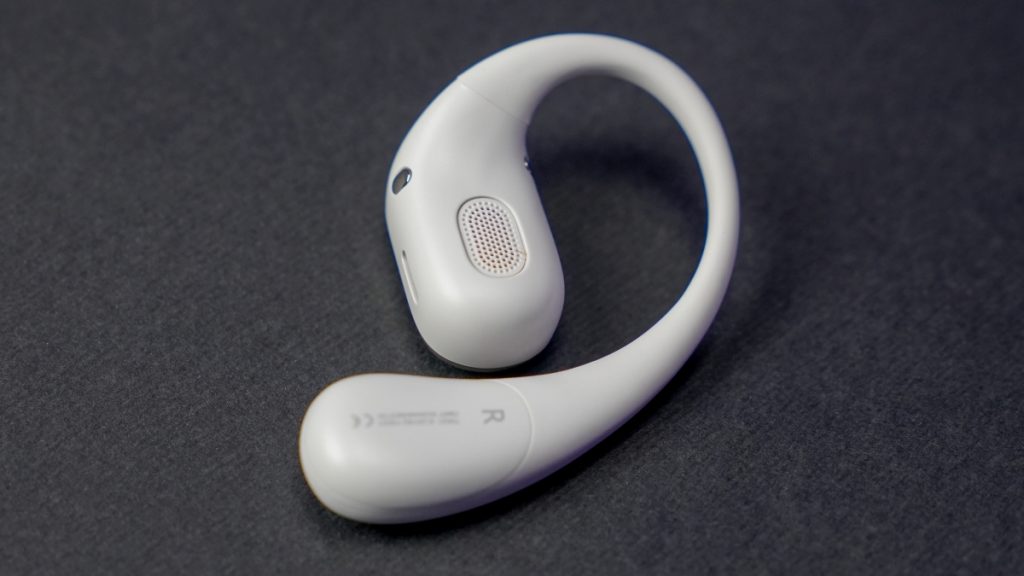
By design, the Huawei FreeArc are open-type earphones. This means there are no ear tips to form a seal inside your ear canal; instead, the speakers rest just in front of your ear canal. So, there are already a couple of functional problems here.
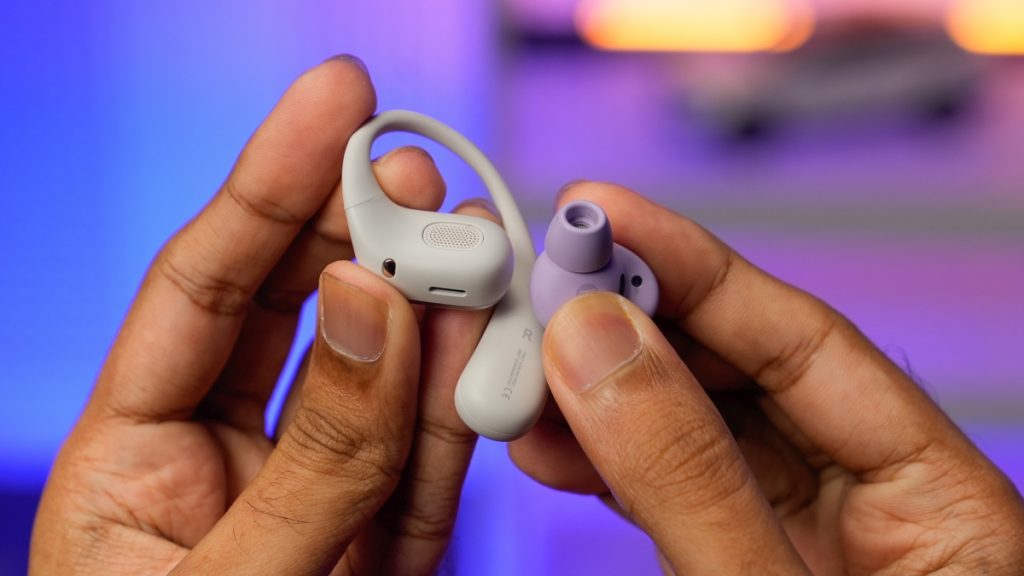
Bass takes a toll as there is no seal to trap the air required to reproduce the low frequency. Therefore, you are treated to a weak and muddy bass that’s significant enough to alter the rhythm of the music. So, songs that are bass-heavy sound unfamiliar.
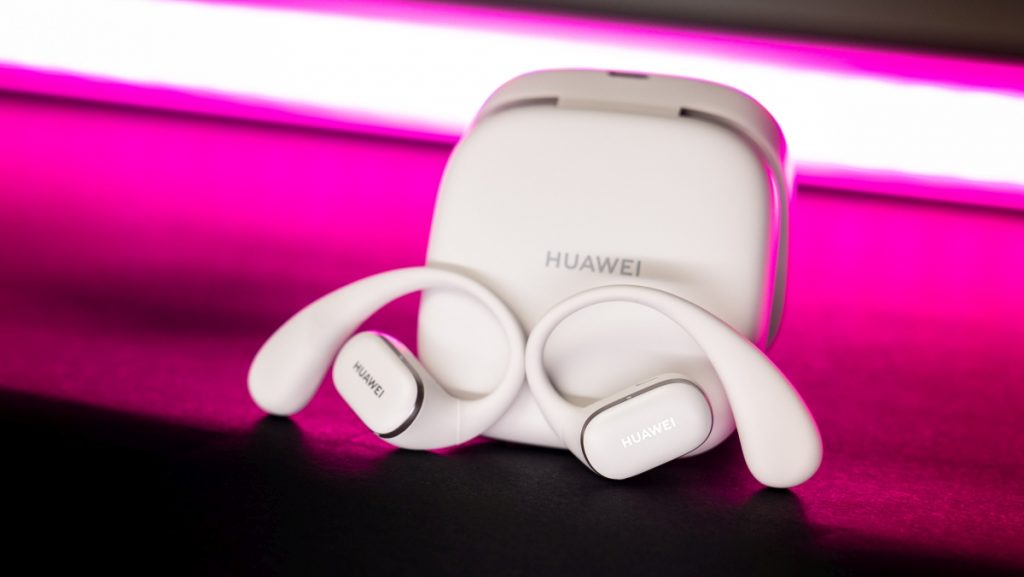
Then there’s the sound isolation or lack thereof. Sounds from the environment tend to drown out the subtle nuances in the song and softer musical elements. So as you can already tell, hearing music with the Huawei FreeArc anywhere but in the silence of a Rolls Royce cabin is frustrating. Believe me, as I write this review while listening to music in a busy kopitiam.

I streamed my music from Tidal at up to 24-bit/192kHz. Not that the Huawei FreeArc supports this bandwidth, but it did eliminate audio quality as a factor. The earphones were connected to my Surface Laptop Go 2 via Bluetooth with the volume set to 50% as I found this was the sweet spot. For context, my normal listening volume on the Galaxy Buds2 Pro is 24% – ANC ftw.
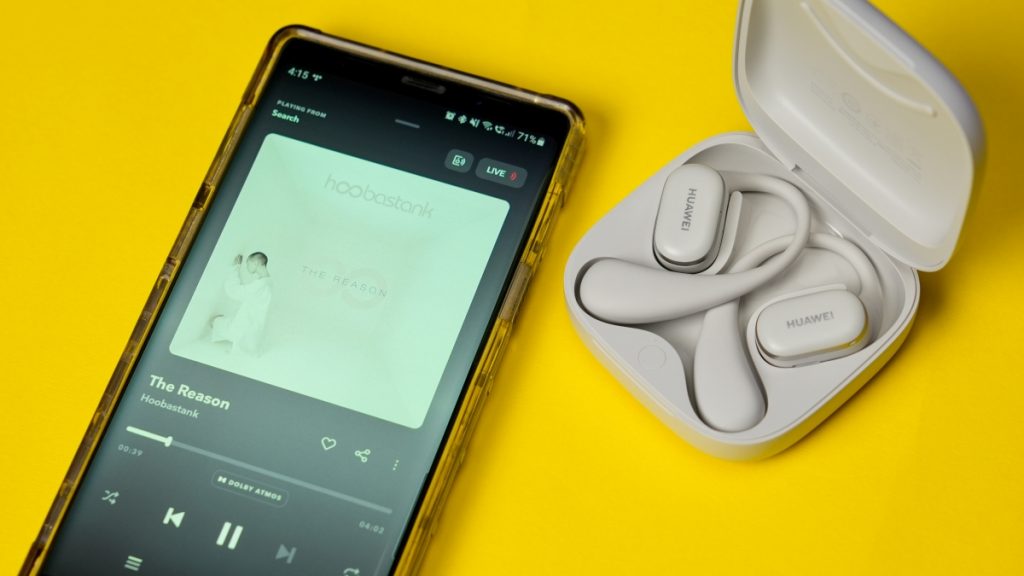
Listening to The Reason by Hoobastank, the bass and mid-bass from the guitar and drums are muddy and lack tightness. The same goes for the introduction section of Drive by Incubus where you feel the bass timing feels off because you don’t feel the hit.
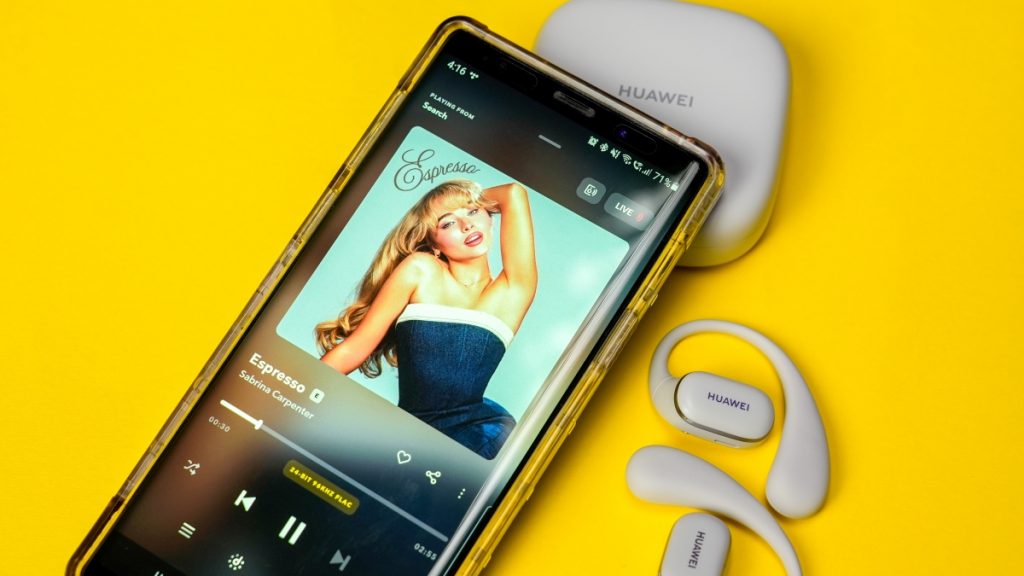
Espresso by Sabrina Carpenter is one of the harder songs to reproduce due to the number of musical elements in the track. So, it’s unsurprising that the Huawei FreeArc makes a mess of it. There are no dynamics in the mids, making the song sound flat. It feels like every element in the song is being played at the same volume, making it difficult to hear and enjoy the composition.

Knowing the consequences, I put on Stereo Hearts by Gym Class Heroes and regretted it immediately with the mids and highs in the pre-chorus being a mess. I switched to my Galaxy Buds2 Pro to confirm that it wasn’t just a poor recording and found that the song was reproduced cleanly.

If you thought that things were going to take a turn for the better, well, you thought wrong. Vocals in Wild Ones by Flo Rida/Sia can be heard clearly, I give the Huawei FreeArc that. But compared to the Galaxy Buds2 Pro, the words lack definition. Yuna’s voice in Crush also can be heard clearly, but it’s challenging to hear the intonations in her voice.

After listening to music on the Huawei FreeArc for 2 weeks, the one aspect that sticks out more than the audio performance is that they don’t draw you into the music or strum your heartstrings.
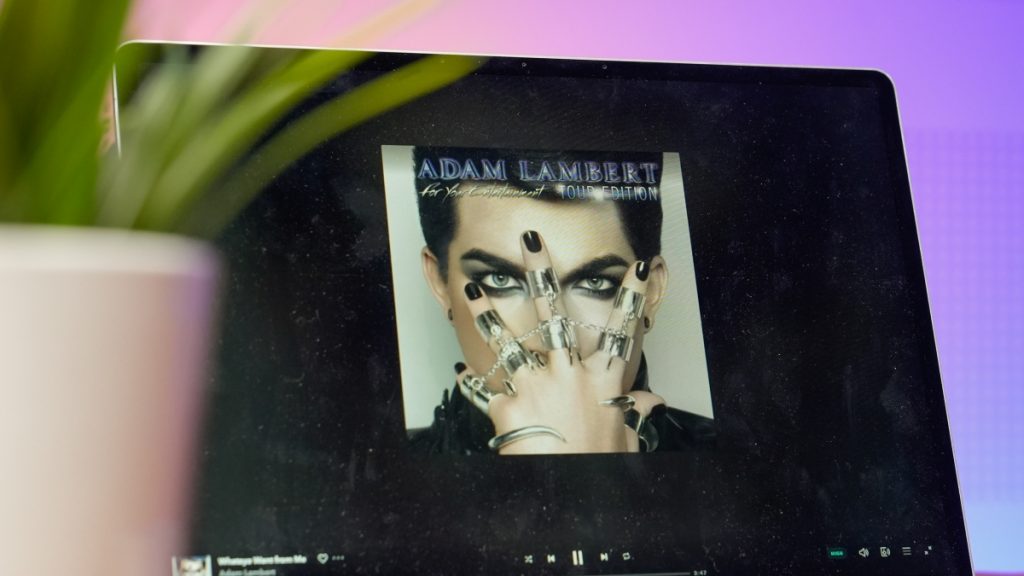
Whataya Want from Me by Adam Lambert sounds very monotonous and emotionless, which is my first time experiencing this song this way. On the other hand, the violins in Ashes by Celine Dion sound like they are playing a single note, and you don’t feel the music rising and falling with her voice.

I’m not exaggerating when I say I expedited this review so I could go back to listening to music on my Galaxy Buds2 Pro.
So if it’s not music, why use the Huawei FreeArc?
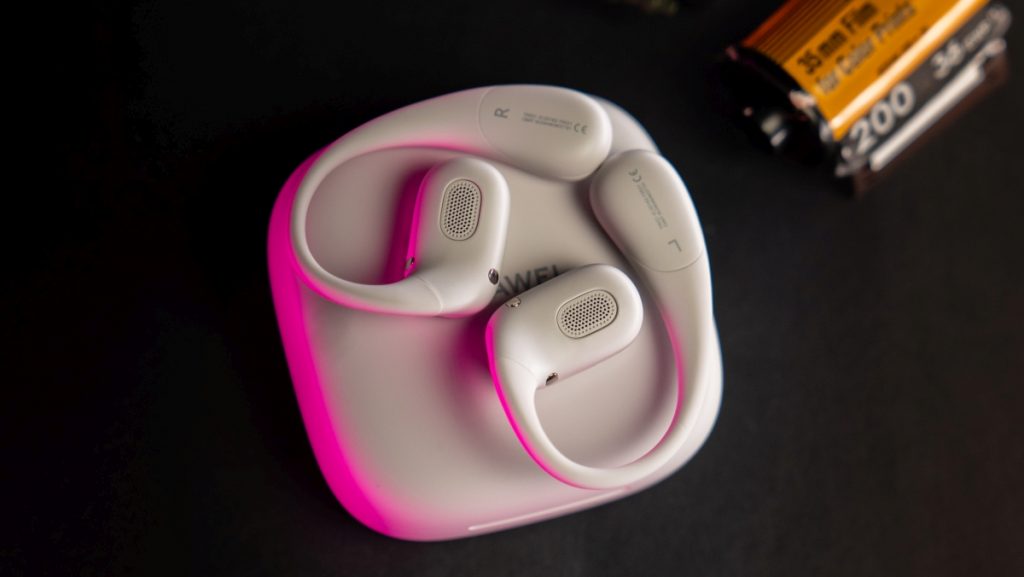
Typically, open-type earphones are designed for environmental awareness while carrying out outdoor activities. Given the design of the Huawei FreeArc, it’s safe to assume that it was designed for people who want to listen to music while exercising or playing sports.
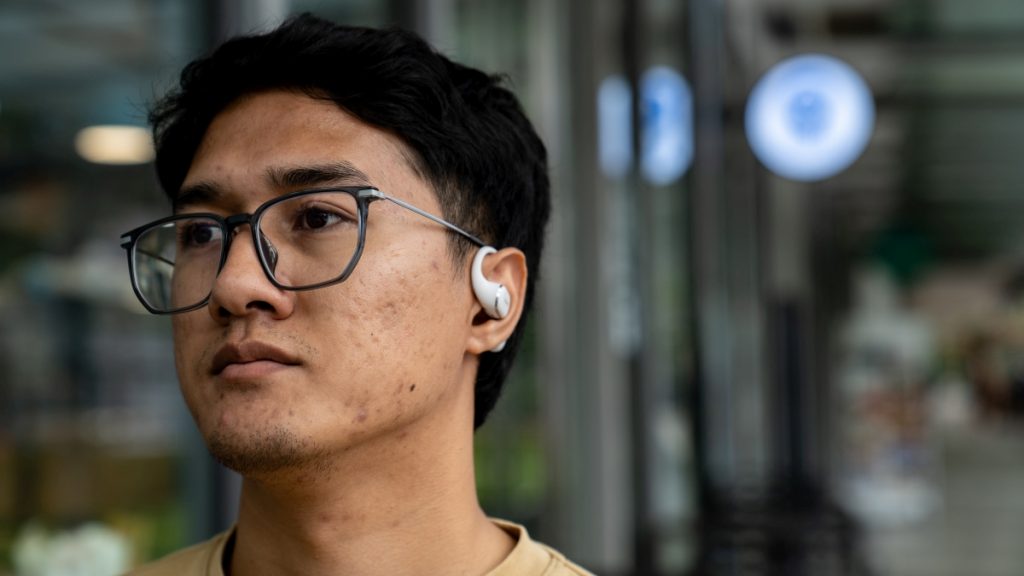
In general, the Huawei FreeArc sits securely on your ears and doesn’t fall off if you’re walking or running. However, it’s worth noting that they don’t fly off your ears if you are nodding vigorously, but if you shake your head with the same tenacity, they will fly off. So extreme sports might not be compatible with these earphones.
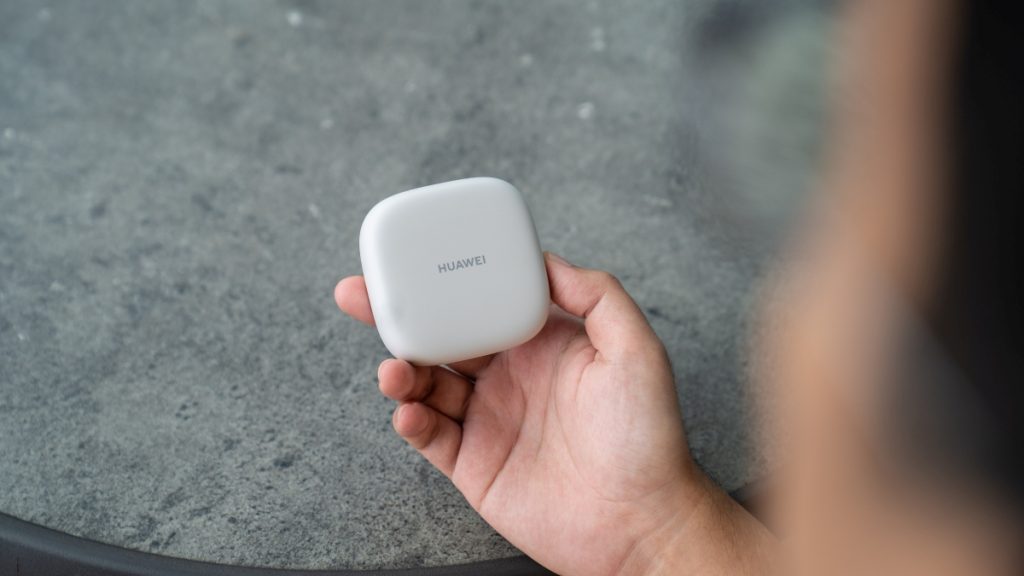
But say you like to travel light when doing your outdoor activities. Well, you’ll be disappointed to know that the charging case is HUGE! It’s two and a half times that of the Galaxy Buds2 Pro’s case. Maybe the case had to be the size that it is to accommodate the unique shape of the earphones, which are also larger than the Galaxy Buds2 Pro.
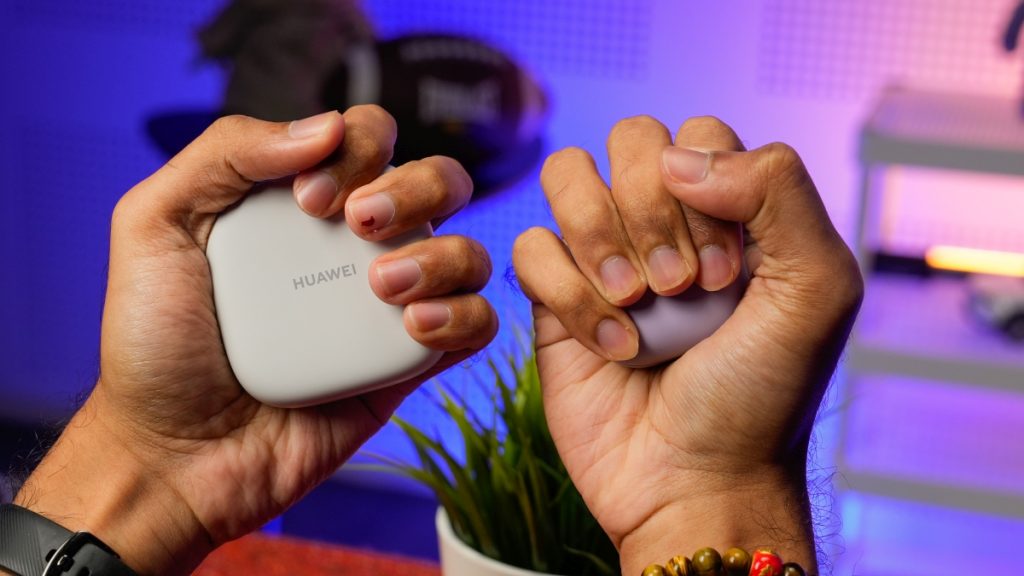
Naturally, it would be safe to assume that given the size of the case and earphones, the battery would be larger to provide longer listening sessions, right? WRONG! The Huawei FreeArc comes with a 55mAh battery, while its case packs a 510mAh battery. This provides up to 7 hours of music playback and up to 28 hours with the case.
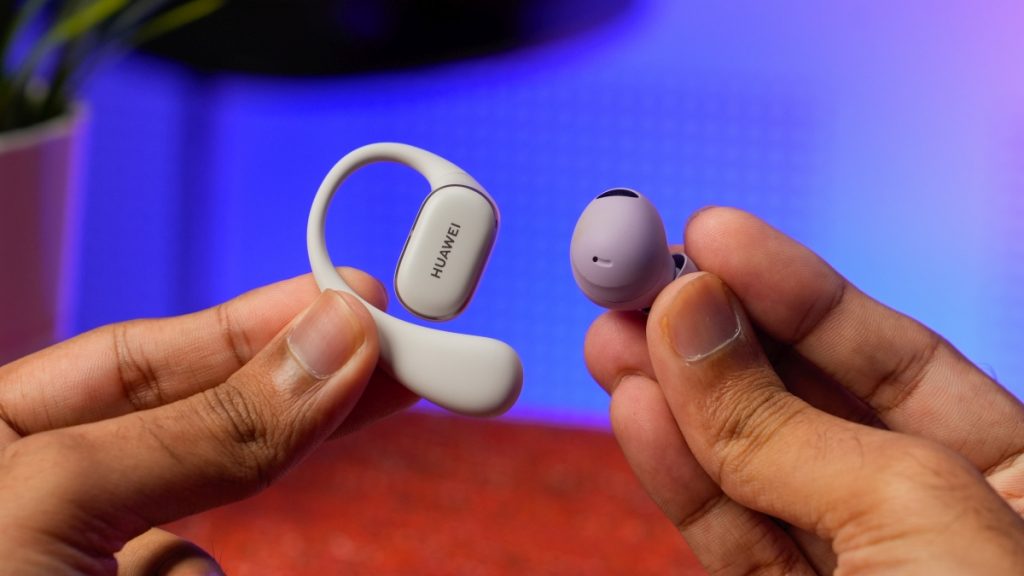
But somehow, the smaller Galaxy Buds2 Pro has a larger battery for both the earbuds and case, coming in at 61mAh and 515mAh, respectively. So, it can do up to 8 hours of music playback and up to 30 hours with the case.
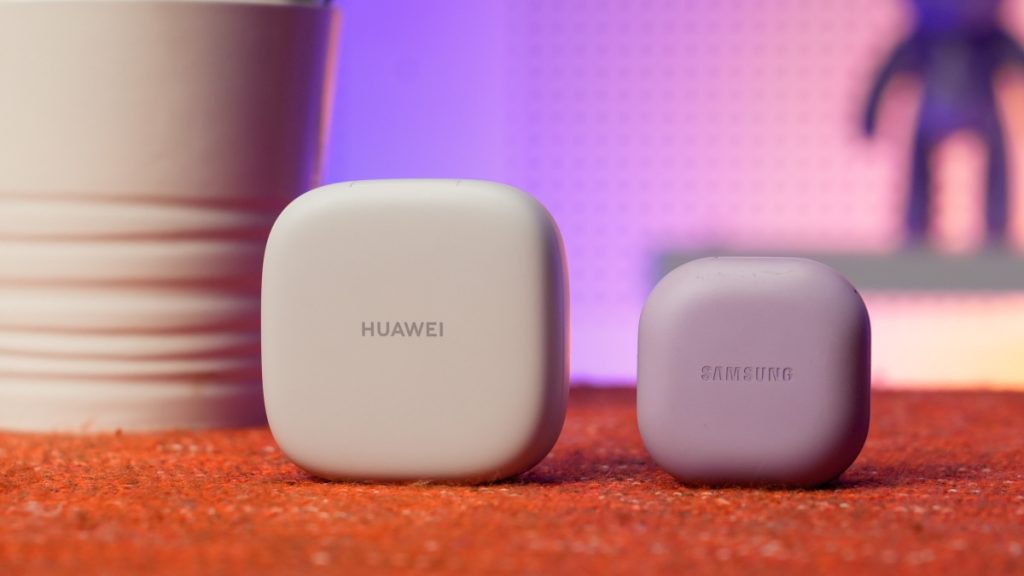
Now, it might be just a couple of hours extra, but when you consider how much smaller the Galaxy Buds2 Pro are, it’s not a good outlook for the Huawei FreeArc.
Okay, how about in an office setting?

If you work with a guy named Chief Chapree in your office who uses a mechanical keyboard that’s louder than a Boeing 747 taking off, then it’s a big fat NO. But if you don’t, I feel like here’s where the Huawei FreeArc belongs.

No, it’s not for listening to music while working. Remember that I said that the ideal volume for these earphones was 50%? Well, at this sweet spot, it’s difficult to hear the person talking to you, especially at an office-appropriate volume, which kind of defeats the whole purpose of these earphones being open-design.
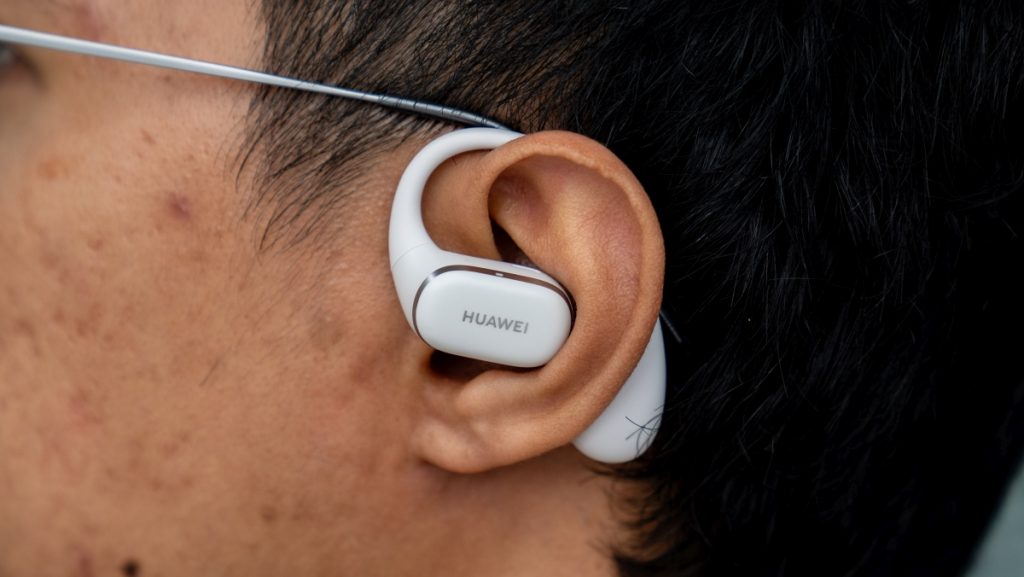
Moreover, to pause/play the audio on the Huawei FreeArc, it’s a double tap on the surface of the body. This took some time to get used to, given the fact that almost all headphones and earphones require a single tap for this function. So, what about skipping tracks? Well, that’s a triple tap when it’s commonly a double tap. I did check if speaking would automatically lower the volume or if taking them off would automatically pause the music, but they don’t.

I deduced that these features could be disabled out of the box. So I tried downloading the app and found some suspicious results. Using an Honor Magic 7 Pro, I scanned the QR code on the manual to download the Huawei Life app as stated in the instructions. However, I was directed to the Huawei App Gallery for some reason.

Manually looking for the app in the Google Play Store led me to an app with the same icon, but a different name! Since I was using the company phone, I proceeded to download this sus app. After tinkering with the app for a while, I couldn’t, for the life of me, get the app to just work, search for the Huawei FreeArc, and connect. It shouldn’t be this hard for those who don’t want to use your devices, Huawei!

So you’re only left with two options. Either lower the volume by swiping down on the surface of the body, which is finicky at best, or pause the music.
I digress. Coming back to the office use
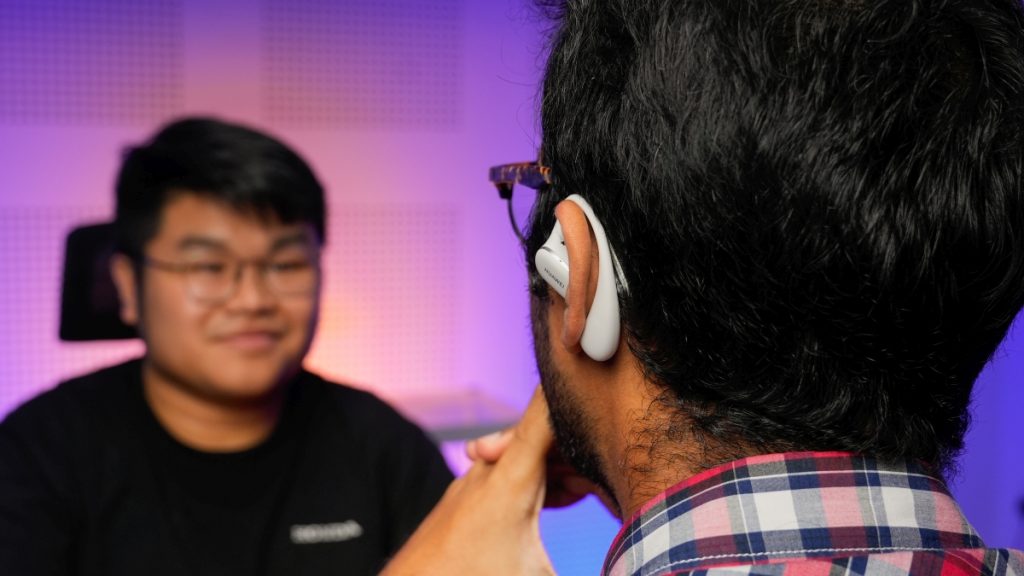
You know it’s considered rude to wear earphones in most workplaces as it hinders communication, and co-workers might need to raise their voices, wave, or tap your shoulder to get your attention. But you need to use your earphones to listen in on meetings, watch videos, or answer phone calls without constantly putting them on and taking them off.

In this situation, the Huawei FreeArc shines as it allows you to, for example, have a conversation with your co-worker while listening in on a meeting. Because vocals are clear on the Huawei FreeArc, you don’t need to turn up the volume that high. So, you remain aware of your surroundings in the office while you listen to audio.
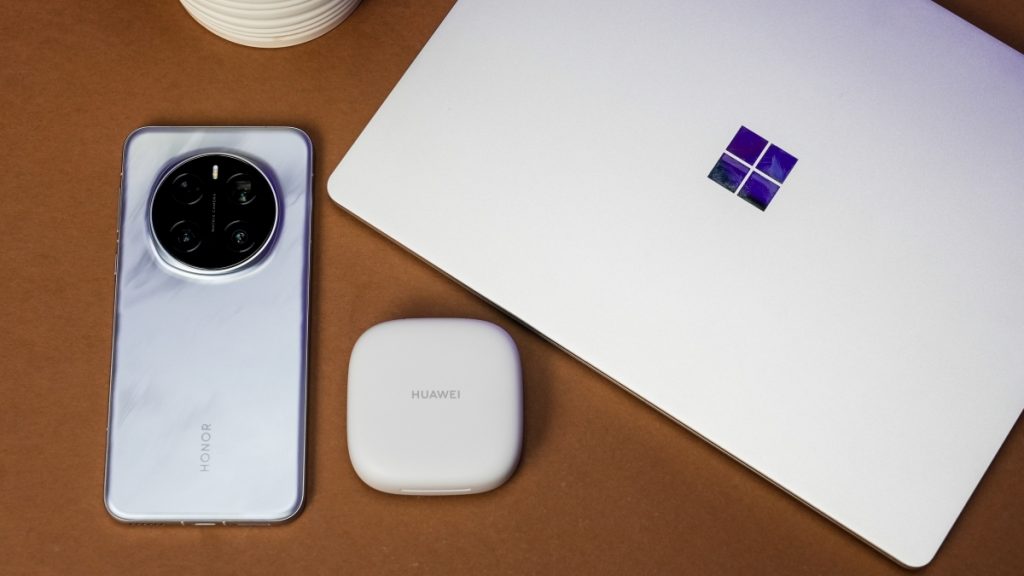
Reinforcing this use scenario is the Dual Connection mode. The Huawei FreeArc can seamlessly switch between the last two connected devices, depending on which device is playing audio. In my case, it’s connected to my Surface Laptop Go 2 and Honor Magic 7 Pro. So if you’re watching a video on your laptop and receive a call on your phone, the connection automatically switches to your phone, allowing you to hear the call on the Huawei FreeArc.

However, in my experience, I found some quirks with the Dual Connection on these earbuds. For starters, it’s annoying that the connection switches to my phone each time I unlock it as there’s an unlock chime. With the YouTube app on the Magic 7 Pro, there’s a bug where it pauses the video after switching, requiring you to hit play twice. Finally, the switching speed is not fast enough to be considered seamless.
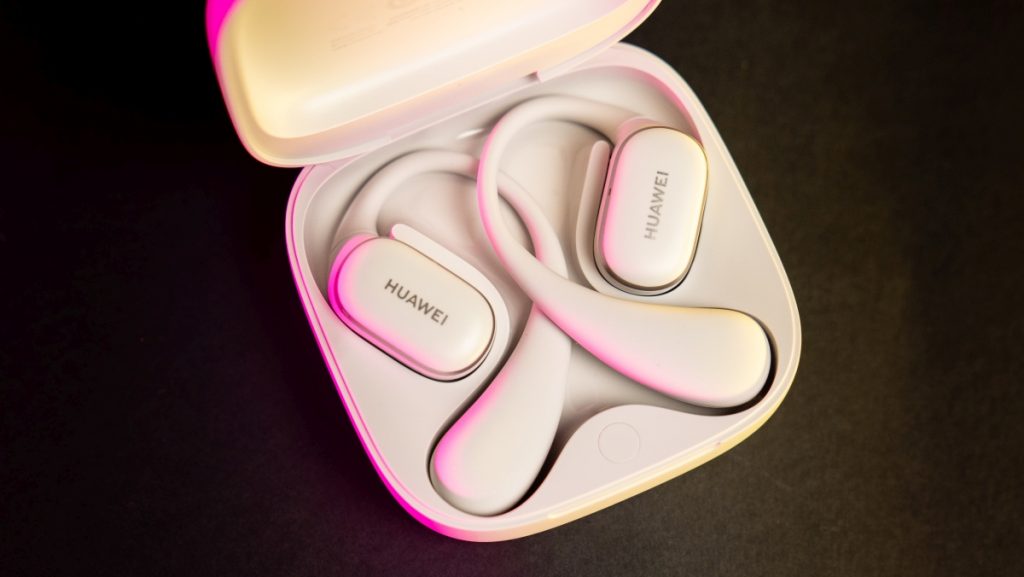
Despite these shortcomings, I appreciate that this feature is available on the Huawei FreeArc because when it works, it’s very convenient.
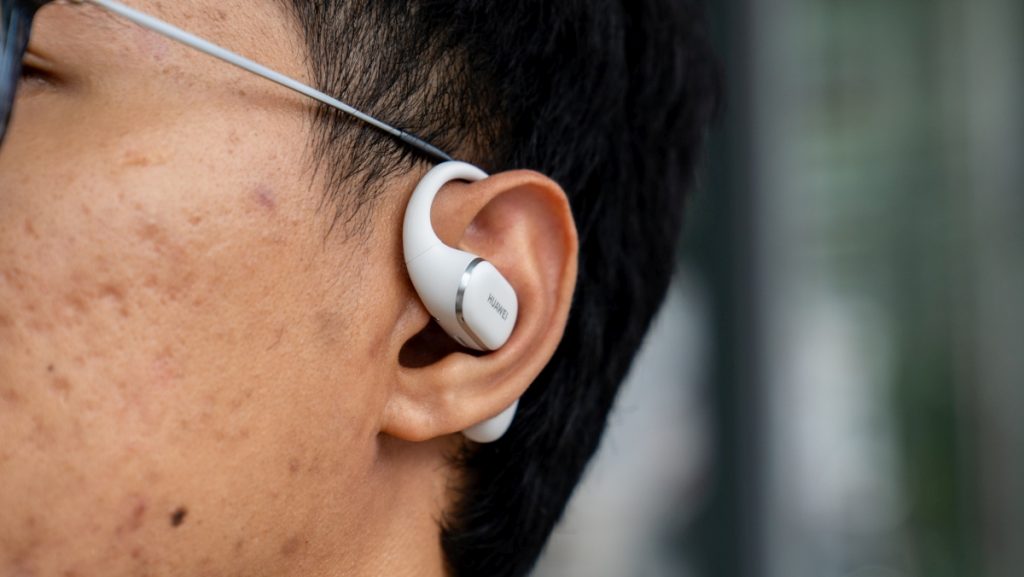
Something else that’s convenient is putting on these earphones. After the first try, I had no issues quickly hanging the Huawei FreeArc around my ear. Just place the tail of the earbud which acts as the hook behind the helix of your ear and pull the speaker to the front of your ear canal. There’s no need to shove any ear tip in or experiment with different tip sizes to find the ideal fit.

That said, when it comes to leaving it on your ears for the entire workday, it depends on whether you wear glasses. For me, the hook part of the earphones that goes over the ear puts pressure on the frame of my glasses, pushing against my ear. After a couple of hours, the top of my ear became sore.
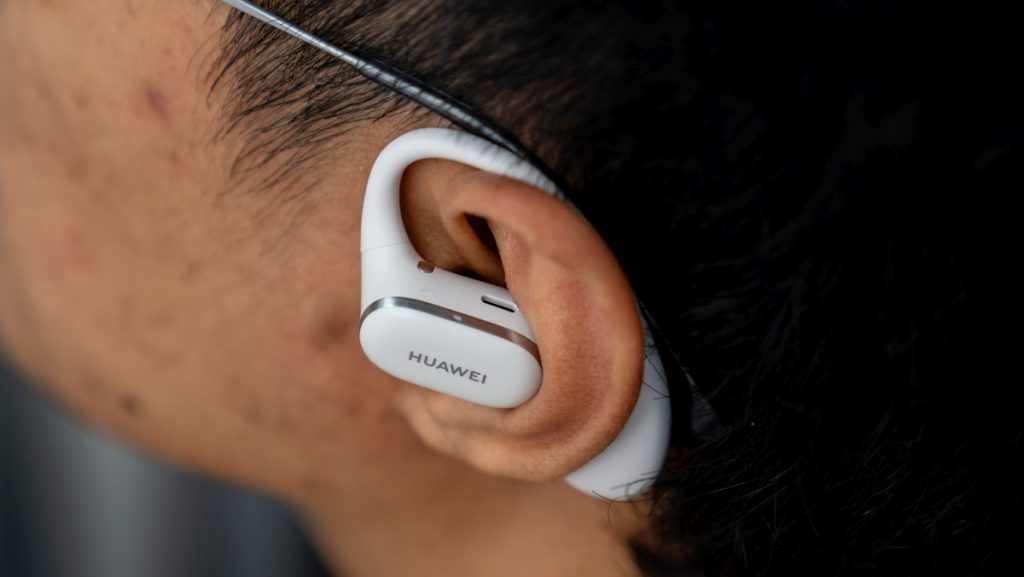
In contrast, my colleague Levy, who doesn’t wear glasses, had no issues with comfort. The earphones themselves don’t weigh a lot, despite what their size might suggest. Yes, at 8.9 grams each, they are heavier than the Galaxy Buds2 Pro and AirPods at 5.5 grams and 4.3 grams, respectively. But since their weight is spread over a larger area, you don’t notice it.
Huawei FreeArc – Buy or Bin?

Priced at RM599, the Huawei FreeArc is a difficult purchase to justify. If you’re looking for earphones to enjoy music, I wouldn’t recommend you buy these earphones anything other than for free. So, what are the alternatives?
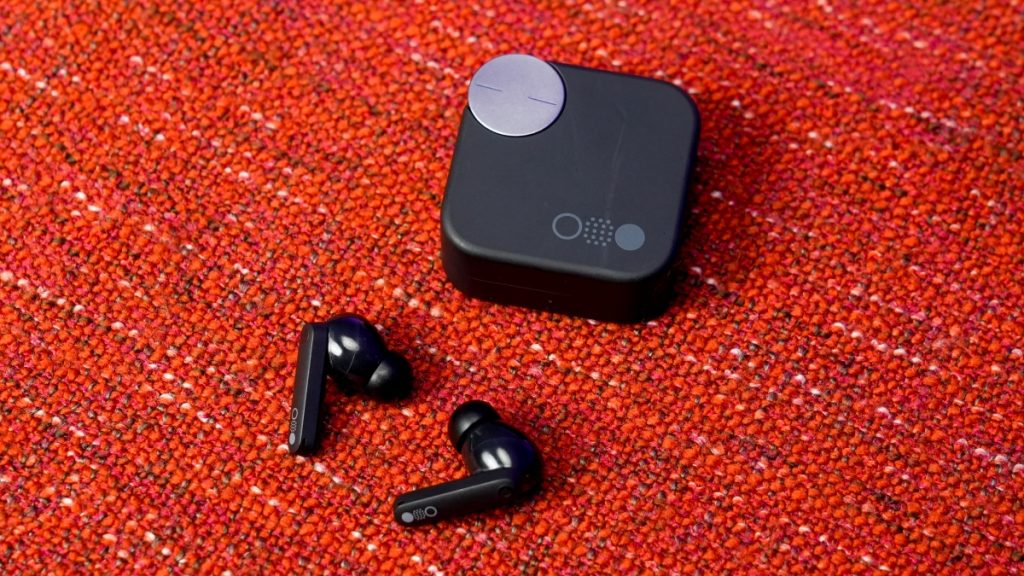
The first recommendation would be the CMF Buds Pro 2 (Not to be confused with the Galaxy Buds2 Pro). For RM299, these are great value, featuring ANC, Dual Connection Mode, and Transparency Mode. They don’t have the best audio quality but are much better than the Huawei FreeArc. Moreover, for RM299, it’s hard to complain when you consider they come with an app that works!

If you can stretch your budget (and maybe take a risk – Sony has a track record of battery issues on their earphones/headphones), for around the same price as the Huawei FreeArc, the Sony LinkBuds S are a more compelling option. They offer superior audio quality, ANC, Transparency Mode, codecs, and features like automatically lowering the volume when you speak.
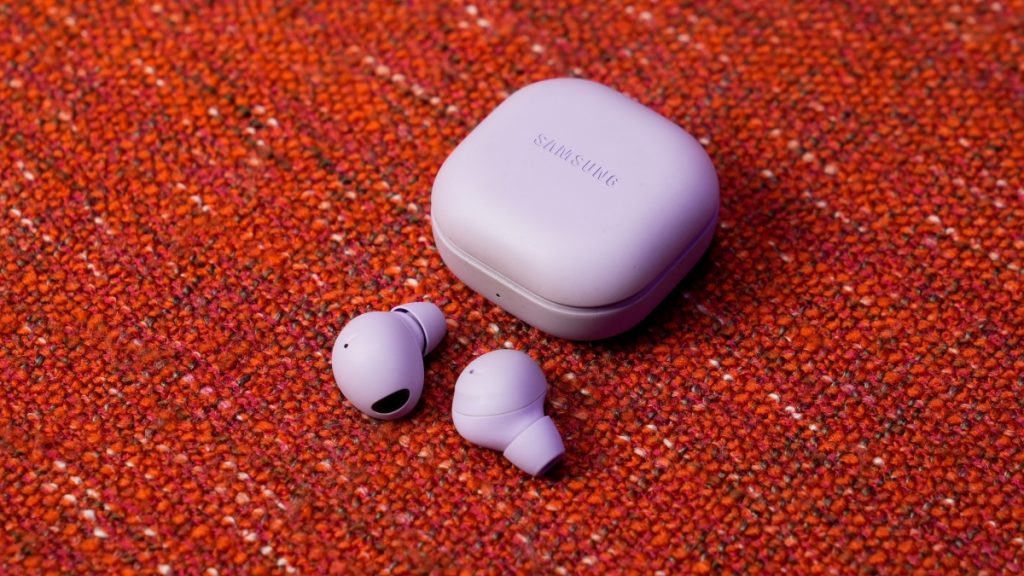
For those of you using a Samsung Galaxy smartphone, you can get the Galaxy Buds2 Pro from retailers that are clearing their stock. For instance, Lotus’s on Shopee is selling it for RM494, which is a steal for what it offers. Not to mention the newer Bluetooth LE audio codec with supported smartphones.
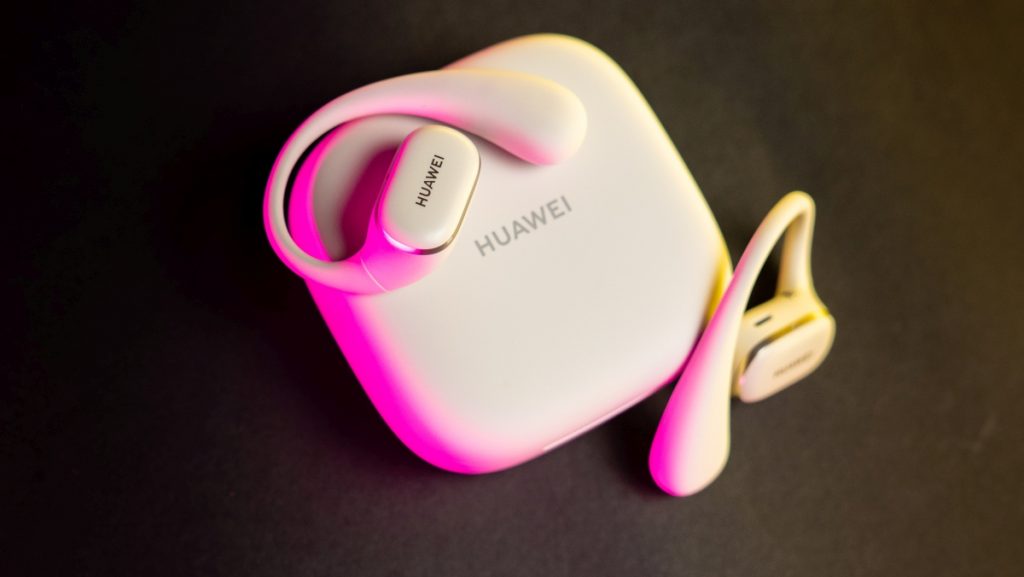
But, if you’re looking for earphones to use in the office while still being aware of your surroundings, there’s some value here as it makes multitasking easier. You can check them out on Huawei’s web store, Shopee, or Lazada.







